#bumphead parrotfish
Text


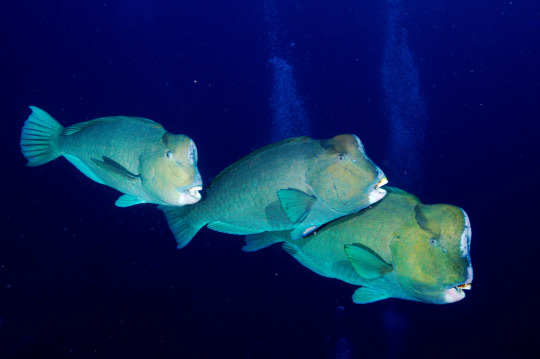
bumphead parrotfish positivity post
478 notes
·
View notes
Text
Animal of the Day!
Green Humphead Parrotfish (Bolbometopon muricatum)
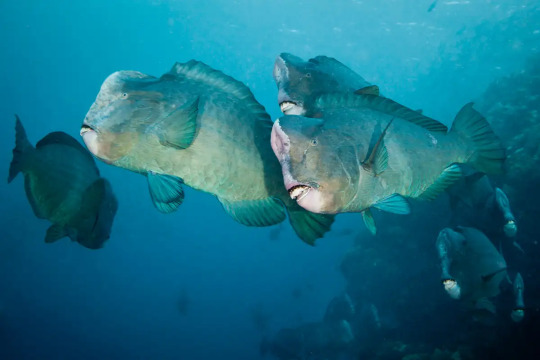
(Photo by Mark Priest)
Conservation Status- Vulnerable
Habitat- Indo-Pacific Ocean; Red Sea
Size (Weight/Length)- 75 kg; 1.5 m
Diet- Algae; Coral
Cool Facts- The green humphead parrotfish is the largest species of parrotfish and the largest, reef-dwelling, herbivorous fish. As they age, their forehead increases in size and their teeth plates become exposed. These fish have the extremely important job of eating dead coral and removing algae from living ones. While huge schools of up to 75 parrotfish can result in bioerosion by eating too much coral, they mostly keep reefs thriving. Unfortunately, their schooling behavior makes them easy targets for fishermen and has led to overfishing. Multiple atolls, reefs, and islands have been protected from fishing and allows the green humphead parrotfish to thrive.
Rating- 12/10 (Can produce 530 tons of force with their mouth alone.)
#animal of the day#animals#fish#marine creatures#parrotfish#monday#september 25#green humphead parrotfish#bumphead parrotfish#biology#science#conservation#the more you know
191 notes
·
View notes
Text
Daily fish fact #697
Green humphead parrotfish!

It is the largest and heaviest of the parrotfishes, growing to be 1.3 meters long (~4'3'') and weighing up to 46 kilograms (100 lbs). They develop their bulbous hump as they mature, ramming it into coral to break them down into smaller pieces to eat.
#fish#fish facts#fishfact#fishblr#marine biology#marine life#sea creatures#marine animals#sea animals#sea life#biology#zoology#parrotfish#green humphead parrotfish#bumphead parrotfish#giant parrotfish
89 notes
·
View notes
Text
Bumphead parrotfish!!! Gotta love the Dive+ app for making my video awesome!
#scubadiving#scuba junkie#scubagirl#underwater photography#underwater casing#life#happy#Sipadan#diving#diverlife#into the blue#ocean love#bumphead parrotfish
3 notes
·
View notes
Text
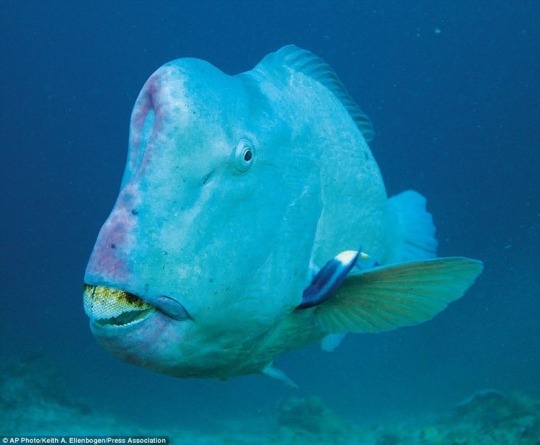
well at least our SCHKEWLS
0 notes
Note
Tell me about the fish you saw snorkeling please :)
Oh my GOD I nearly burned my self with my coffee when I saw this. Thank you so much for asking, but also you've opened the flood gates because it just so happens I am about to dump so many fish on you. While I primarily study freshwater fishes, I am a lover off all things aquatic, so here we go (all these images are from the internet):
Parrot fish galore and HUGE ones at that. The biggest one I saw looked like this. I don't know my scarids very well, but I do know that I saw a bumphead parrotfish. So funny looking. I was honestly surprised by how all the fish out there are CONSTANTLY nipping at the corals, but the current was pretty strong so we all had to swim a lot. It makes sense that they always need to be eating. I had no idea life on the reef was so turbulent

A lot of acunthurids. No blue tangs but plenty of brown ones and some unicorn tang! The ones I saw had really small humps.
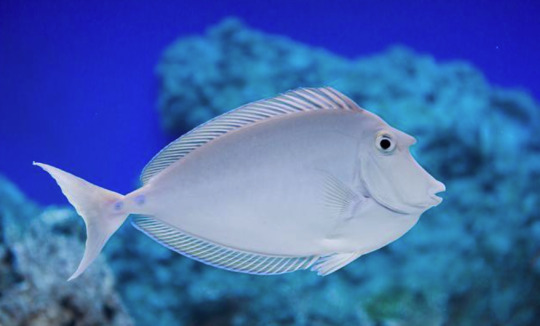
So the common name for acunthirds is surgeonfishes because they have these sharp, blade like spines on their caudal peduncle called a scalpel. You can see it a bit more clearly on the Clown Unicornfishes (which were my fave cause the colors were so bright). Here they're the bright orange processes near the tail.
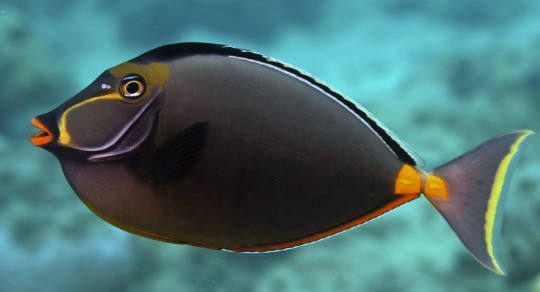
Wrasses. SO many wrasses. We saw birdnose wrasses with their long snoots, moon wrasses that were as colorful as rainbow lorikeets. My favorite were the cleaner wrasses following all the big parrotfish around and eating their ectoparasites,
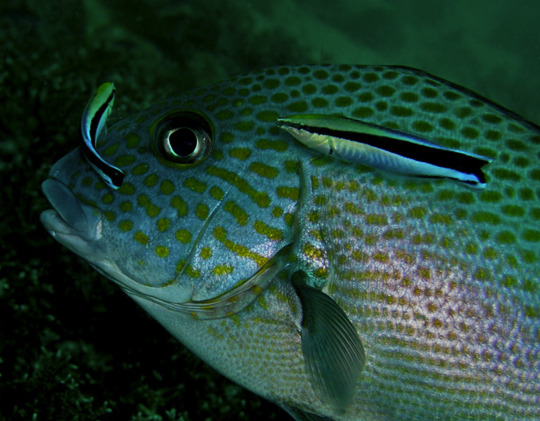
I saw a moray!! That was the most unexpected find for me. I was the only one in my group to see one, but it was so far out that the crew working the sailboat had to call me back in 😅 It was brown and spotted black and looked just like this guy. I didn't actually see his head, but I saw his long long body. He was huge!!

Some gobies hiding in their holes. Apparently some species of goby have a mutualistic relationship with shrimp. The shrimp digs a series of tunnels in the sand and the goby stands sentinel at the entrance. The shrimp then maintains contact with the goby with its long antennae so that it knows if the goby moves or startles when predators are nearby.
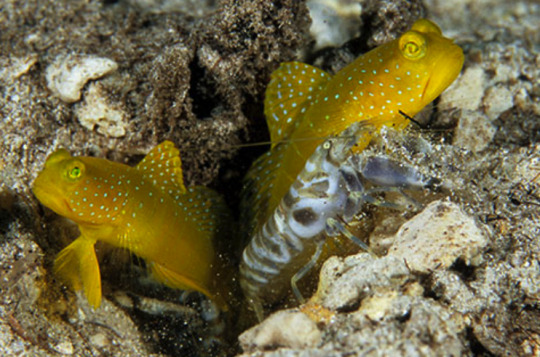
The goatfish was probably my second favorite find after the moray because I had no idea they were out there. Goatfish have two long chin barbels covered in tastebuds that they use to probe along the sand in search for prey. They are quite dextrous barbels too. They flick em around so fast!

I got stung by something! it whipped me across the face pretty much 20 minutes into the water and it felt long and filamentous so i thought maybe it was some stray strand of anemone or jellyfish with active nematocysts. The crew member said it was likely a small jelly so woohoo! I got stung by a jelly on the great barrier reef :D
Triggerfish. Iw as hoping to see more tetraodonotiforms like puffers or filefish or a cowfish maybe, but I'm glad I still got to see at least one representative of the order cause they are among the most bizarre groups of fishes

This Moorish Idol that looked exactly like Gill from finding nemo
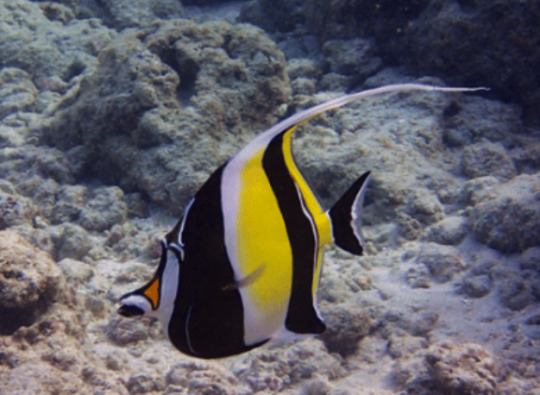
Lemonpeel angelfish, bluegirdle angelfish, emperor angelfish, you name it.


a lot of chaetodontids too. As I said, I don't study marine fishes so all the butterfly fishes looked so similar to me XD most of them were some combination of white, yellow, and black with their characteristically tall bodies and narrow snouts.


Giant clam!!! THEY WERE SO BIG. And so colorful. The movement of their spiracle truly hypnotized me.

Alright. That's all I got time for at the moment, as I need to pack and head up to the rainforest for the last leg of my trip. I'm sure I have forgotten dozens of fish already XD Thank you for attending my show and tell and for expressing interesting. Truly, I'm living any biologists dream rn, and I couldn't be more grateful for the opportunity to visit such a beautiful part of the world 🥲
25 notes
·
View notes
Text
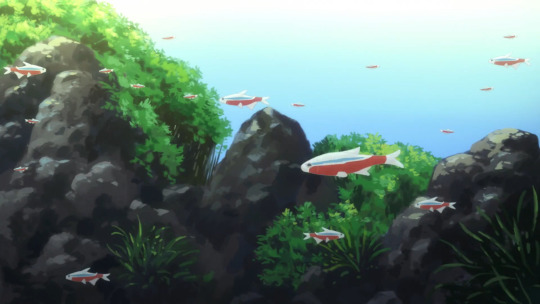



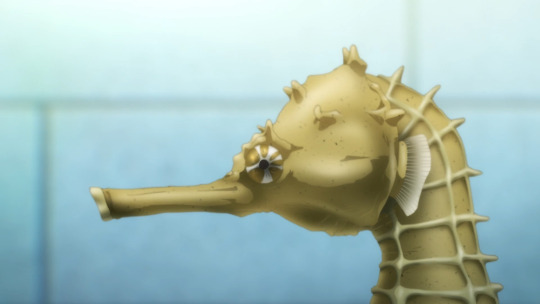

here are the fish used in this week's Lycoris Recoil: Cardinal Tetra, Lionfish, Lobster, Bumphead Parrotfish, Seahorse, Garden Eels


manta ray, white tip shark, maybe red snapper?, silver arowana
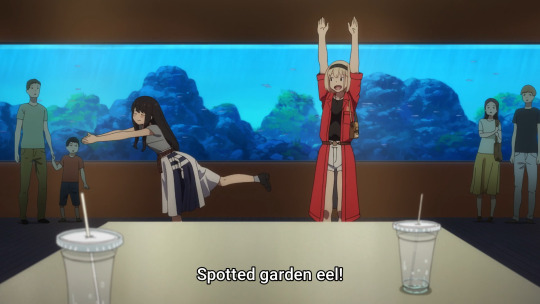
A fish and spotted garden eel
#i was thinking blue flowerhorn chichlid at first for the parrotfish but it didnt look quite right#as for the tetras its just a small difference between neons and cardinals#neons only have half their bottom red#idk about specific lobster species#they straight up said the eel names so#lycoris recoil#fish#long post
60 notes
·
View notes
Text

Green Bumphead Parrotfish 💖
7 notes
·
View notes
Photo


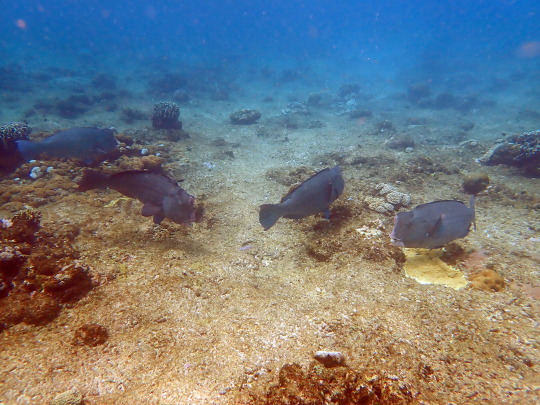
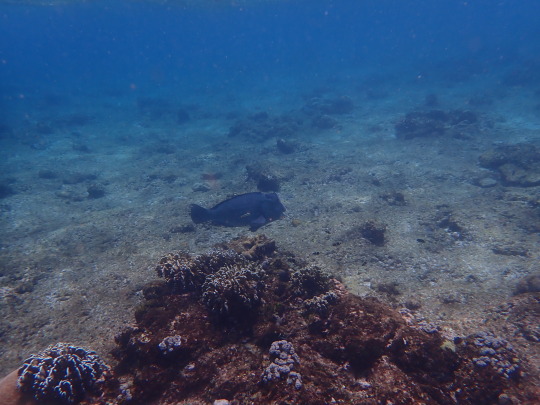



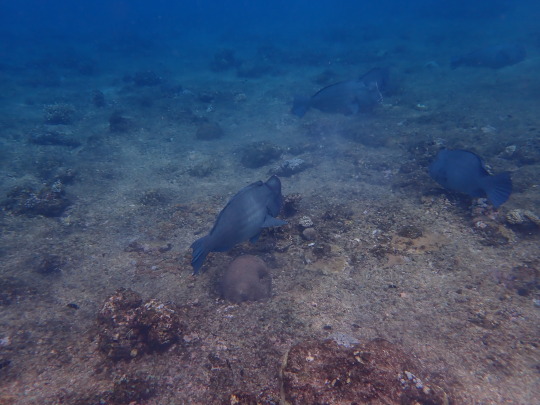
Bumphead parrotfishes on Norman Reef of the Great Barrier Reef
#fish#fishblr#fishes#parrotfish#great barrier reef#underwater#snorkel#snorkeling#wrasse#wrasses#tropical fish
2 notes
·
View notes
Text
Reflections from a volcano in the middle of nowhere
Written from: Una Una, Togean Islands, Central Sulawesi
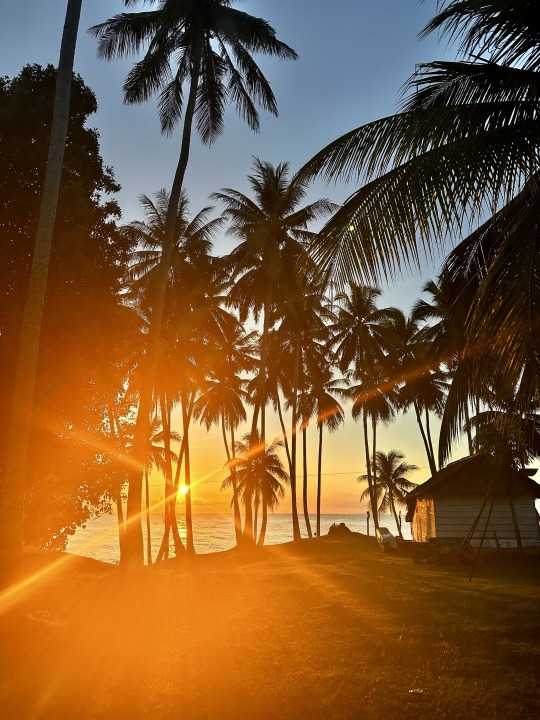
Pictured: Views from a sunrise run
After uprooting my life to live on a small volcanic island in the middle of nowhere 12,000km from home, it was inevitable that I would spend some time questioning my decision. Not least due to my own (totally misplaced) need to justify such a dramatic departure from the life that someone of my age and background is expected to live - including leaving the best support network that anyone could ever dream of, a beautiful home, and a career in environmental advocacy which felt like cheating because I enjoyed it so much.
However, what I used to self-consciously refer to as my "fake" life - which involved moving to a tropical island to dive and drink coconuts every day - has, in two short months, taught me so much more about humanity and what it means to rely on a healthy environment than I ever could have learned back home. This is without doubt the biggest dose of reality that I have ever been faced with, and I wouldn't have it any other way.
I first came to Una Una four months after receiving a malignant melanoma diagnosis that left me with lots of stitches, an MRSA infection and an inability to look forward to anything just in case it got taken away from me again. Having tried and failed to come here three times since 2012, when I finally received the green light from my doctor to travel to this tiny dot on the equator, it had a lot to live up to. I shouldn't have worried, because I have never felt more myself than the first time I floated on top of the reef, came across a famliy of bumphead parrotfish and watched the sun set over Una Una's impeccably forested Colo volcano.

Pictured: The crater at Mt Colo
This is a place where the ferry schedule is dictated by the size of coconut harvest - the thing that the majority of islanders rely on for their income. Where fishermen still whittle their canoes out of tree trunks, and where the entire population (rumoured to be 500 people) rely on their catch for sustenance. Where alcohol is distilled from palm leaves and drunk from plastic bags. Where the ongoing threat of a volcanic eruption looms over everyone who lives here. Where there are no formal electricity, water, health or rubbish facilities. Where medical support is scarce, education is only provided up to the age of 13, and most buildings cannot be expected to last beyond a few short years. It is also home to the friendliest and most supportive community that I have ever been a part of.
In this environment, a threat to the trees, beaches or reefs is a threat to everyone who lives here. However, just because it is critical to protect these essential resources, it does not follow that it is easy. Una Una is located in the Gulf of Tomini, within the 3,600 Km2 Kepulaun National Park that includes all 66 of the Togean islands. Unfortunately, it is conservation area in name rather than nature - a "paper park", with limited oversight and little evidence that the nominal (and soon to increase) park entrance fee does anything to support its residents, or protect it from exploitation.

Pictures: Coconuts being loaded onto the ferry
For example, last week I walked past a group of at least 30 men whose daily practice of stealing sand from Una Una for construction is causing devastating coastal erosion. Only yesterday, our staff found the severed head of a black-tipped reef shark floating above Pinnacle 1 - the dive site located within viewing distance of our dive centre where an unknown fishing boat had been loitering suspiciously the day before. Upon investigation, it seems that rich Indonesians have a habit of bribing locals to help them catch sharks, reportedly using dolphin heads as bait.
Today, we received a dynamite fishing alert when a boat full of Bajau people from another island was spotted speeding towards Apollo, a dive site to the West of Una Una where we take guests to see schooling barracuda at least two times a week. Driven by bribery, corruption and sheer desperation, the Bajau people have developed a practice of making bombs out of fertiliser and using them to speed up the fishing process. Let that sink in: a people whose reliance on coral reefs is so ingrained that that they have genetically evolved to favour free diving, is now actively destroying those reefs, in a way that poses real danger to theirs an other's lives, in an area that is supposedly dedicated towards marine conservation.

Pictured: A shark head found on our local dive site, reportedly caught using dolphin heads as bait.
Clearly, they are complex dynamics at play here, and as the newest non-Indonesian resident of the Togean islands, I know next to nothing about how one might start to address them. I certainly can't claim a moral high ground - I come from a country that was built on the spoils of exploitation and I took about a hundred flights to get here - nor do I have any right to determine whether one people's needs on this islands are greater than another's. I also don't want to get embroiled in reporting environmental crimes when, more often than not, it results in the families of the whistleblowers receiving death threats from those involved.
What I can say is this: everyone on this island deserves to benefit from their active, courageous and continuous decision to protect rather than exploit the nature that surrounds it. And if Una Una's residents don't have the power, means or time protect it from the greed and desperation of others, then those who do, including those who work for the National Park and across the Togean archipelago's various resorts, have an obligation to intervene on their behalf. The plans that we have on Una Una already span advocacy, education, plastic removal and conversion and coral propagation, but that is the only the beginning: there is so, so much more that we can be doing to help.

Pictured: A local resident off on a sunset fishing trip
I have so much to learn from those who have been navigating the complex dynamics of remote archipelago living for far longer than I have, and who are already working to address some of these challenges. For example, the residents of Una Una who have taught me everything I know, or the amazing Togean Conservation Foundation, which was working to support Bajau people to develop alternative livelihoods in seaweed farming before the pandemic crashed the global market. So instead of trivialising a phase of my life that I once described as "pretend", I will instead be using it to try and make a meaningful difference for those who have so generously welcomed me into their community. Rest assured that (internet allowing) I’ll be sharing what I learn along the way, one coral fragment / impassioned letter / beach clean / WhatsApp group or dive site stakeout at at a time.
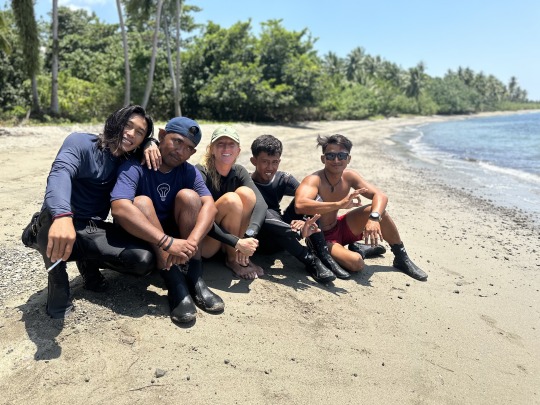
Pictured: A happy surface interval off Apollo dive site, which is currently under threat of being bombed by members of the Bajau community.
#togeanislands#sulawesi#diving#conservation#environment#endangered species#biodiversity#unauna#national park#togean#sharkfishing#scubadiving#scuba
1 note
·
View note
Photo

🔥 Green Bumphead Parrotfish.
0 notes
Video
youtube
Bumphead Parrotfish | Bali Dawn Dive
2 notes
·
View notes
Text
The Yin Yang Master film reviews

The Yin Yang Master (Onmyoji) Japanese 2001 - the first film and to my mind the best in terms of story and bonding between the detective/supernatural heroes the exorcist Abe no Seimei and Lord Minamoto no Hiromasa from the novels of Baku Yumemakura.
Be aware this film came out in 2001, and some of it shows in terms of special effects and the acting style is also of it’s day, but you slide into the rhythm of it pretty quickly, the film is charming now, believable as Heian Era Japan of a thousand years ago, and you’ll get no better sublime, snarky and sexy portrayal of Seimei than Kabuki Master Mansai Nomura.
The ghost elements are truly creepy, and things can get a bit gross, this Hiromasa is a bit of a buffoon, but always a good man, and you definitely root for him, and sigh over his hopeless loves for court ladies, but you completely feel the bond between the two heroes and the tears are heartfelt. You also feel sympathy for the villain and the noble immortal lady in the piece, stay to watch the slo mo Kabuki dancing in credits. (also has a legit sequel in 2003)
Four Stars

The Yin Yang Master-Dream of Eternity -2019 Chinese - takes the original story and transports it to China, we also get a new backstory with Seimei (here called Chang Ming) and he meets his detective partner Hiromasa (called Yuan Bo Ya) as an antagonist. Despite a poker face, the handsome and currently highest paid actor in China Deng Lung manages to emote enough to keep our attention, making Hiromasa aloof and a bit judgy, but still willing to go the extra mile for Seimei, (portrayed by a workmanlike Mark Chao) I think of this as a good beginning to a future series, where the bond between the two has room to grow.
The film is certainly a feast for the eyes, glittering costuming and sets, as well as special effects, instead of Seimei having female shikigami to aid him, his helpers are all lithe young shirtless males, and while that’s certainly enjoyable to me, I do miss sweet butterfly girl Mitsumushi of the first films. I never buy into the ‘reality’ of the film as ancient China as I did ancient Japan in the earlier film, it’s a bit too polished and perfect, and we don’t interact with anyone outside the main actors.
I do feel sympathy for the villain here and the immortal lady, and there is a new twist by the screenwriter, but I don’t know that it makes the story any better. Due to outside issues the film was pulled early from Chinese theaters and there may not be a planned sequel. You can catch this on Netflix
Three Stars

The YinYang Master - 2020 Chinese - had some promise in the beginning, giving us a little sense of atmosphere in Ancient Fantasy China, once again Seimei and Hiromasa meet as antagonists with Hiromasa played for comedic effect, but there is nothing to make the characters here any more unique than your garden variety cultivation story drama on tv. The plot is also not based on the Baku Yumemakura stories but takes inspiration from the Onmyoji game.
The special effects in terms of creatures and shikigami (supernatural creatures) are pretty good, but they are simply plot-driven, even your attachment to the Red Ghost, a baby demon, is contrived rather than heartfelt. (the most engaging character for me was a demon based upon a bumphead parrotfish, alas he was gone all too quickly)
The boss villain here is utterly underwhelming, where the climactic fight of Dream of Eternity was awe inspiring, here it is ridiculous with the type of monster chosen. There are more female characters, which is a plus, but they also fall into distinct categories, plucky friend of the hero, possible old love interest of the hero and of course, villainess beholden by loyalty to villain, but they never become more than stock characters for a story that falls flat and the great shame of it all, a deep friendship and bond between Seimei and Hiromasa is never formed. Also on Netflix.
No Stars
#onmyoji#the yin yang master#the yinyang master#chinese film#japanese film#onmyoji film#baku yumemakura#detective stories#supernatural stories#abe no seimei#minamoto no hiromasa#film review#japanese culture#chinese culture#demons
31 notes
·
View notes
Text
Day 143 11/17/2021
-Computer work: email catch up, data entry, and PARP meeting.
-eDNA collection and filtering.
-Trip to North and South coral gardens. On the way we tried to look for a temperature logger. I saw a baby Eclipse butterflyfish. It was cute. Then we went to Barren for a decoy colony check and SD change out. South coral gardens snorkel to find an old temperature logger. This spot is usually off limits, but we got to adventure over there. It was soooooo cool. Lots of incredible coral and so many fish. The current was ripping though so we didn’t go out too far. It was seriously amazing. We also saw a huge Bumphead parrotfish!! Like as big as me or bigger! It was crazy.
-That night we had a really nice bon fire and saw some super cute crabs along the coast.
-Goodnight!
2 notes
·
View notes
Photo
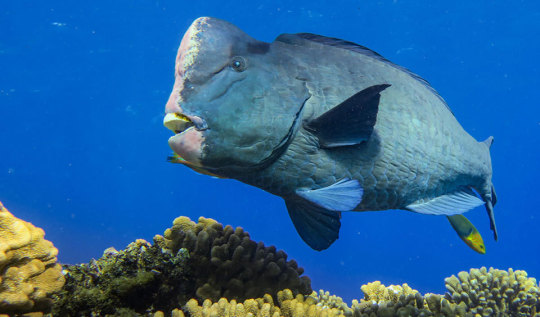
Humphead Parrotfish (Bolbometopon muricatum)
The enormous bumphead parrotfish is an amazing fish that can live to be 40 years old, growing up to four feet long and 100 pounds. They use their large head bumps to literally bump heads during competitive displays, when large numbers of fish aggregate to spawn on a lunar cycle. The bumphead parrotfish excretes white sand, which it may produce at the rate of several hundred pounds a year!
Read more about how sand is made:
https://oceanservice.noaa.gov/facts/sand.html
20 notes
·
View notes
Text
Pacific Remote Islands Marine National Monument celebrates its 10th Anniversary

The shallow waters and forest of Palmyra Atoll with the text, “Monument[al] Stepping Stones”. Photo by Kydd Pollock
Comprising some of the most isolated, oldest, and healthiest atolls, reefs, and islands, the Pacific Remote Islands Marine National Monument (the Monument) is home to a vibrant underwater and terrestrial world. Although the Monument is pocketed around the central Pacific Ocean, it is the most widespread collection of coral reef, seabird, and shorebird protected areas under a single nation’s jurisdiction. These marine and terrestrial refuges sustain many endemic species of corals, fish, seabirds, insects, and vegetation not found elsewhere.
On January 6, 2009, the Pacific Remote Islands Marine National Monument was established, surrounding the areas of: Howland, Baker, and Jarvis Islands; Johnston, Wake, and Palmyra Atolls; and Kingman Reef. We celebrate its 10th anniversary this year and all that the Monument has taught us.
Each land area tells of a unique history in geology, biology, and human history.
The seven atolls and islands included within the Monument are farther from human population centers than any other U.S. area. Though they are remote from humans, they are vital nesting habitat for millions of seabirds and resting habitat for migratory shorebirds. These low-lying islands host up to 15 different breeding seabird species. Some colonies are large enough to be of international significance.

A map of the Pacific Ocean showing the 4 Marine National Monuments in relation to each other, including PRIMNM. Graphic by Holly Richards / USFWS
Long after seabirds and marine mammals had been using these remote islands as stepping stones for their next destination, early Polynesian voyagers stopped here as well when exploring the Pacific. It is known that Wake Atoll is an important cultural site for Marshall Islanders.
Several of the islands were annexed by the United States in the 1850s under the Guano Islands Act. The establishment of trans-Pacific air routes and territorial disputes led to official colonizing efforts by the US in the 1930s under the American Equatorial Islands Colonization Project. In 1935 the US occupied and reclaimed Howland, Jarvis, Baker, and other Pacific islands by sending young men who were mostly Native Hawaiians (now known collectively as Hui Panalā‘au) to construct settlements. In fact, the men on Howland were the ones who prepared for Amelia Earhart and Fred J. Noonan’s flight landing in 1937! However, radio contact was lost and Earhart’s plane never arrived: her fate still unknown.

The Earhart Light day beacon on Howland Island at sunset. Constructed by the Hui Panalā‘au and named in Earhart’s honor. Photo by USFWS
On December 8, 1941, a day after Japan’s attack on Pearl Harbor, the Pacific Island territories were also bombed. Two men were fatally wounded on Howland Island and the rest of the members of Hui Panalā‘au were evacuated in 1942. The contributions and sacrifices made by Hui Panalā‘au established these islands as part of the United States, thus setting the stage for their conservation status as National Wildlife Refuges and Pacific Remote Islands Marine National Monument today.
The emergent lands at Johnston and Wake Atolls remain under the jurisdiction of the U.S. Air Force, but the submerged lands and waters out to 12 nautical miles are protected as National Wildlife Refuges. Important restoration work has been conducted for the preservation of wildlife and habitat on many of these refuges: including work towards eradicating the invasive yellow crazy ants on Johnston, the invasive rats on Palmyra, along with the removal of military debris from all of the islands for native habitats and species.
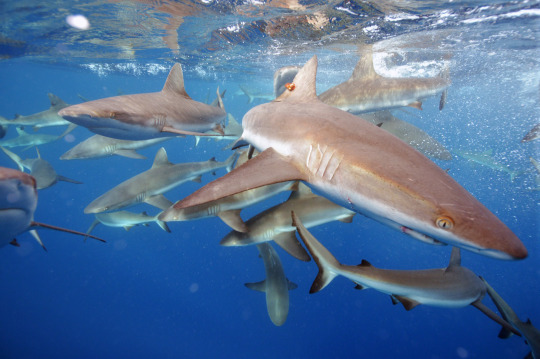
Several grey reef sharks swimming close to the top of the water’s surface at Palmyra Atoll National Wildlife Refuge. Photo by Kydd Pollock
These interconnected refuges are key stepping stones for the colonization and dispersal of species across the Pacific Ocean.
The threatened green and endangered hawksbill sea turtles, pearl oysters, giant clams, reef sharks, coconut crabs, groupers, humphead and Napoleon wrasse, bumphead parrotfish, spinner dolphins, melon-headed, beaked, and humpback whales - all and more are found within the Monument. Their abundant populations contrast with other areas where they are greatly depleted; many nationally and internationally threatened, endangered, and diminished species thrive in the refuges of the Monument. Their history and current presence is what we aim to protect, as the Monument contains some of the oldest and most isolated atolls and reefs.
But what makes these islands and atolls specifically unique? Here are some quick facts about them that no other place can boast:
Johnston is an ancient atoll, one of the oldest in the Pacific alongside Wake, which is the oldest living atoll in the world!
Wake Island is a National Historic Landmark for the preservation of sites and artifacts from WWII in the Pacific and the transpacific aviation era prior to the war.
The Monument’s protected waters hold corals that are up to 5,000 years old and as many as 418 fish species and over 180 coral species (at Kingman Reef and Palmyra): numbers that are the highest in the central Pacific.
Kingman Reef is known to be the most undisturbed coral reef within the U.S., containing a greater proportion of apex predators than any other studied coral reef ecosystem in the world.
Expansive shallow coral reefs and deep coral forests at just Howland, Jarvis, and Barker Islands teem with a fish biomass double than that found in the Hawaiian Archipelago.
Palmyra Atoll consists of over 26 islets, many covered in Pisonia grandis forests: one of the best and last in the Pacific. These tropical trees provide habitat for 11 species of seabirds, including one of the largest red-footed booby colonies in the world and the largest black noddy colony in the Central Pacific.
youtube
A video showing the deep water of Johnston Atoll. Entitled “Forest of the Weird,” it shows a landscape of almost entirely tall glass sponges. Video by National Oceanic and Atmospheric Administration Office of Ocean Exploration and Research, 2017 Laulima O Ka Moana
Because these atolls and islands are far from population centers and direct human impacts, we can gain knowledge from these protected waters to improve coral reef management in other areas. They are ideal “laboratories” for assessing the effects of climate change. Baker, Jarvis, and Howland islands afford unique opportunities to conduct climate change research at the equator: their coral skeletons recorded the earth's climatic history for millennia! And by protecting the Monument, future generations of Americans will still have the opportunity to sense the wonder of nature in the heart of the Pacific.
Want to Know More About these National Wildlife Refuges (NWR)?
Here are more links to describe what it’s like to visit: Jarvis and Palmyra
Take a virtual dive at Palmyra!
Here are more links to photo albums of the different NWR:
Pacific Remote Islands Marine National Monument
Palmyra Atoll NWR
Kingman Reef NWR
Johnston Atoll NWR
Baker Island NWR
1 note
·
View note